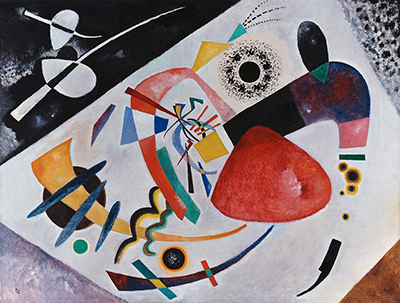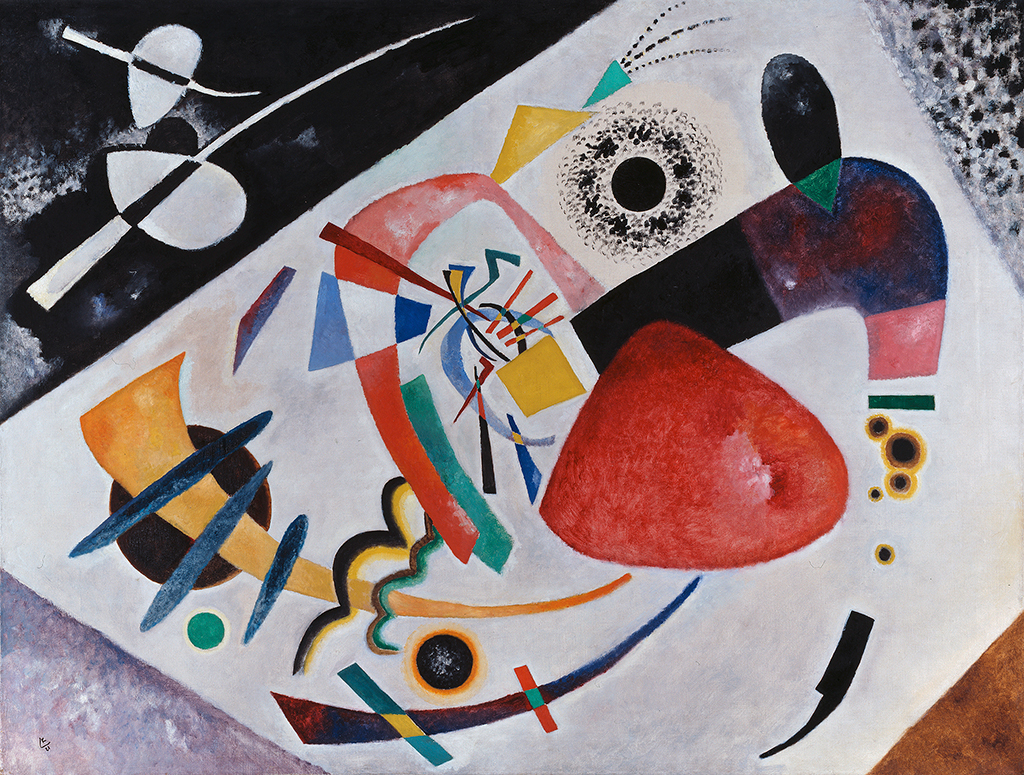This bright artwork is dated from 1921 and offers an early example of Kandinsky's concentration on geometric shapes which occurred after stylistic changes over several decades.
This piece features an array of inter-connected shapes which together form a bright and exciting composition. Kandinsky places a large bright shape in the centre which dominates your initial focus, before you look elsewhere to see some of the sweeping angles that cover most of the canvas. He chooses a white background that allows the alternative colours to stand out, and uses tone of yellow, red, green and blue to do this. He used a similar palette in many other works and had studied the use of complementary colours as part of his learnings around artistic theory. Whilst being a busy design, there is plenty of white space between the different elements which allows the work to breathe effectively and not seem cluttered, despite the amount of detail added. In other examples from his career, even the background would be colourful and this meant the some might find the piece overpowering in some senses.
This was an artist who desired to turn his back on traditional art, seeking new ways to express himself and lead a new group of European painters. He combined his innovative use of colour with a concentration on geometric shapes to put his deepest feelings onto the canvas. Whilst being technically capable of producing traditional art, he wanted to move away from that and even his landscape paintings would be reduced in detail and held a focus towards colour and expression, ultimately proving to be particularly popular with the public.
This painting can now be found at Lenbachhaus in Munich, Germany. They have a fine selection under the umbrella of Blue Rider, which features a number of paintings donated by Gabriele Munter, who was an artist herself and also particularly well connected to Kandinsky. Alongside artworks from both of them, you will also find other related names such as Franz Marc who himself produced famous portraits of animals within an expressive style. Others are also featured and it is a good introduction to this very particular German movement which became highly influential upon European art more generally. This would become one of the highlights in the history of German art, though there are many other notable contribtions such as Durer and Cranach in the Northern Renaissance as well as Friedrich within the Romanticist landscape genre.





